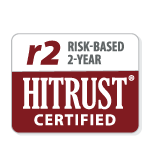Published on .
Each year, the Medicare Advantage (MA) Star Ratings system gets incrementally more challenging for health plans as CMS adjusts the framework to support members by demanding continuously enhanced quality and experiences. For health plans, this emphasis on continuous improvement creates an environment where changes are frequent, and rapid response to new or updated measures and cut points is a core competency.
Success brings significant rewards in the form of Quality Bonus Payment (QBP) incentives, greater marketing power and increased membership growth. In fact, according to a 2018 Navigant/Guidehouse study, “a 1-Star increase in the Star Rating is associated with an 8–12 percent increase in beneficiary enrollment.” Meanwhile, failure to keep pace with the pack can lead to missed financial opportunities, a diminished public reputation and even a CMS directive to terminate operations for repeat offenders.
It may feel chaotic at times, but that doesn’t mean there aren’t constants to fall back on. Addressing social determinants of health (SDOH) barriers always plays a fundamental role in producing positive adherence outcomes. And improving medication adherence is one of the most effective fulcrums for achieving 4.0+ Star Ratings.
To effectively leverage these factors into higher Star Ratings, plans need to address core issues—especially medication adherence—in an intentional, consistent and member-friendly manner. Developing a year-round plan for boosting medication adherence, particularly among high-risk, chronically unengaged members, can create ongoing momentum, give plans a leg up in a highly competitive environment and help them maximize their Stars performance. 
Why medication adherence?
Nonadherence to medications has far-ranging impacts on outcomes and costs, leading to tens of thousands of avoidable deaths and approximately $500 billion in unnecessary spending every year. To help combat the problem, CMS has triple-weighted certain medication adherence measures (Medication Adherence for Hypertension RAS Antagonists, and Medication Adherence for Cholesterol) to encourage plans’ focus on making certain their members are getting the preventive care they need for common chronic conditions.
As a “force multiplier” for the Star Ratings system, high performance on medication adherence measures is also tied to high performance on other related measures. So, as a result, careful attention to achieving medication adherence (especially in high-risk, unengaged members) helps MA plans reach the all-important 4.0-Star threshold for accessing QBP dollars, boosting revenue and potentially experiencing higher enrollment rates of up to 12% that can kickstart a cycle of success.
Though many health plans do recognize the importance of medication adherence, they often struggle to meet their goals—especially if they have a high number of clinically complex members who experience significant socioeconomic barriers to engaging in care. These members can be difficult to identify without the right analytics infrastructure. And without coordinated and compassionate outreach, and socioeconomically sensitive interventions, it can be challenging for MA plans to build meaningful relationships that lead to sustained changes in members’ behavior.
Succeeding with medication adherence—and therefore succeeding with Star Ratings—requires health plans to refine their approach to identifying and connecting with individuals who are falling short of their adherence benchmarks.
And that starts by taking a closer look at another constant in life: the 12-month calendar.
Learn more at our upcoming webinar:
Seeing Double: Improve 2023 and 2024 Star Ratings in One Seasonal Push
Wednesday, August 23, 1-2 p.m. CST
Shifting the perspective on the medication adherence timeline
Many health plans fall short of their goals because they primarily view medication adherence as a mid-year issue instead of a year-round push. Plans may feel forced to wait until the second quarter of the year to get started with outreach because they haven’t yet identified potentially at-risk members during the first few months of that performance year.
But what plans may not realize is that it’s never too soon to have an impact on positive behavior change.
Instead, plans need to rethink how they use the calendar in their medication adherence outreach activities. And that means using the remaining end-of-year months as a ramp-up period into the new performance year.
By shifting to a 15-month timeline to get ahead of upcoming performance deadlines, plans can get ahead on improving and maintaining engagement not just in those few bonus months, but throughout the next performance year, leading to extraordinary impact on the plan’s success rate with triple-weighted measures and their overall Star Rating.
Embracing the “jumpstart and surge” philosophy
Instead of starting over when the calendar flips to January, MA plans should view the fourth quarter as the start date for intensive medication adherence work tied into the following performance year.
During this “jumpstart” period, plans can get a head start on understanding and addressing SDOH barriers, such as lack of transportation to the pharmacy, concerns over affordability of prescriptions, or daily limitations that make it challenging to fill and take medications as prescribed.
Proactively working with high-risk members on these issues can form strong, influential relationships that build self-care skills, and provide motivation and accountability for staying on track with their recommended care plans. This proactive approach gives plans the advantage of adherence improvement in the current plan year, as well as the momentum to start the next year strong—allowing them to “double down” on their adherence efforts.
Towards the end of the year, plans can lean into a “surge” of activity to close any lingering gaps around adherence or complete “one-and-done” preventive care measures, such as vaccines and cancer screenings, to make certain that plans are meeting their goals and members are starting the new year with the tools they need to sustain healthy behaviors.
To learn more about how to design a high impact “jumpstart and surge” medication adherence plan for your MA health plan (and to hear about real-world results from your peers), tune into our upcoming webinar: Seeing Double: Improve 2023 and 2024 Star Ratings in One Seasonal Push on August 23 at 1 PM CST.
 Authored by:
Authored by:
Glenn Wirick
AdhereHealth Chief Commercial Officer

